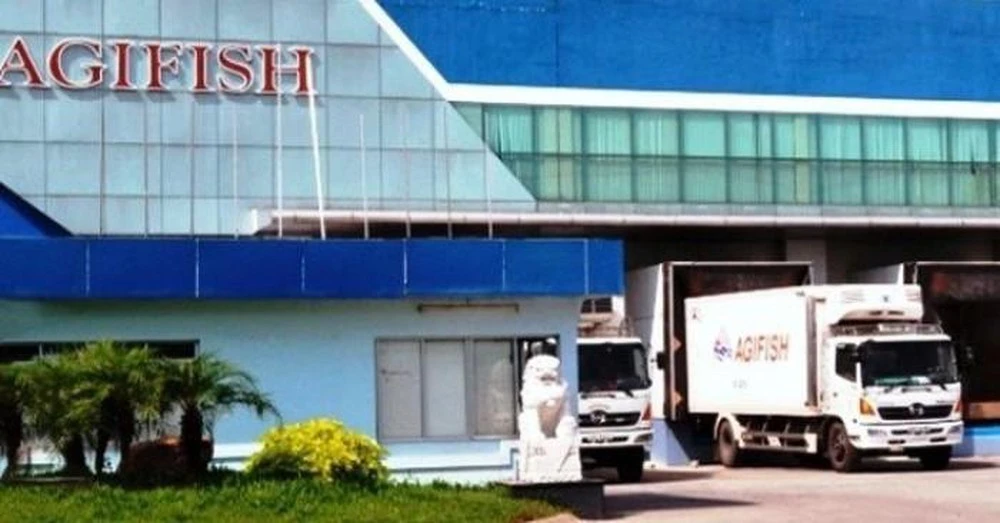
Not only is this regretful for investors but also painful for the entire seafood industry, as AGF was once a leading aquaculture business in the entire Mekong Delta Region, even awarded the title “Hero of Labor” by the Vietnamese government.
Once leading in aquaculture
AGF's precursor was the An Giang Frozen Factory, which was officially put into operation in March 1987. In November 1995, it was upgraded to An Giang Fisheries Import Export Joint Stock Company (Agifish Co.) and within a short time, by 2000, AGF was awarded the title "Hero of Labor" by the Vietnamese government and became one of the leading enterprises in the fisheries sector.
In the domestic market, AGF's Yellowtail catfish and Shutchi catfish products were voted as "Vietnamese high-quality products" from 2003 to 2013. In particular, AGF was the only enterprise in the seafood industry that had been awarded the title of “Vietnam Value" in 2008, 2010 and 2012.
AGF's strength has been the international market and it has been a leading export company consecutively for several years. At its peak, AGF products were available in major export markets such as North America, Europe, Asia, Australia, Russia, the Middle East and South America. AGF was also a pioneer in applying quality control in its entire production process: HACCP, ISO 9001:2000, Safe Quality Food 1000 (SQF 1000); Safe Quality Food 2000 (SQF 2000), Global Standard for Food Safety (BRC), ISO 17025: 2005, ISO 14001:2004
AGF was the first enterprise to apply ASC standards for pangasius farming. Due to its ability to meet with international standards, AGF products were allowed to be exported to the EU market under four codes DL07, DL08, DL09 and DL360, and was granted an exclusive HALAL certificate to export to Islamic countries.
Not only did AGF make an impression in processing and export of Yellowtail catfish and Shutchi catfish, it also became a leading enterprise in farm activities, and for research and developing fingerling sources for supply. The development of AGF opened up opportunities for local people and farming households that were linked to the supply and value chain of the farming industry.
Victim of M&A
On 2 May 2002, AGF officially listed shares on HOSE at a closing price of VND 30,000 per share. With its unique strength and potential, AGF listing became like a “bait” for mergers and acquisitions (M&A). Many businesses in seafood processing and foreign investment funds expressed their intent to own AGF but had difficulty in collecting enough shares.
However, in 2008, AGF suddenly dropped when its net profit was only VND 12 bn for the whole year, down by 67% compared to the previous year in 2007. Seizing this opportunity, Hung Vuong JSC (HVG) proactively offered to buy shares in AGF, with the message that it would quickly revive the fortunes of the company back to leading position in the industry. By January 2010, HVG completed raising ownership of AGF to 51%.
After falling in the hands of HVG, AGF made positive changes. Revenue in 2011 and 2012 increased dramatically, at VND 2,762 bn and VND 2,811 bn, respectively. This was a sharp increase from VND 1,780 bn in 2010. By 2011 AGF was certified as one of the top three Pangasius exporters by Vietnam Association of Seafood Exporters and Producers (VASEP).
However, since 2013, AGF's position in seafood exports plummeted to 7th place with an export value of USD 112.7 mn. In 2014, AGF continued to downgrade to 14th place with export value decreasing by nearly 25% compared to 2013. Also in 2014, Xuyen Thai Binh JSC (PAN) sold out 5.2 million AGF shares, equivalent to 20.53% of charter capital. Meanwhile, HVG continued to buy more shares and raised ownership to around 20.3 million shares, equivalent to 79.58% of charter capital.
It is worth mentioning that, after gathering one term, AGF shares plummeted even faster. HVG itself is not brighter due to the burden of interest expense for corporate acquisitions (Saigon Investment has written a reflection on HVG in the previous issue). By 2015, AGF suddenly reported a loss in the first financial year. The peak was in the 2018 business results with negative profit of around VND 178 bn.
This was the second consecutive year that AGF reported losses, bringing the total accumulated losses to around VND 270 bn, while the charter capital was only VND 281 bn. AGF faced difficulties when banks tightened loans. This led to a shortage of capital for production, a shortage of food for farming areas, and a shortage of supply for processing plants.
Continued losses
On 16 February, HOSE suddenly announced a mandatory delisting of more than 28.1 million AGF shares from 17 February because of delay in submission of financial statements for three consecutive years. In fact, if not for this reason, AGF would have been delisted anyway due to continued losses for three consecutive years.
In the reviewed financial report of AGF, auditors emphasized that the accumulated losses and short-term liabilities exceeded short-term assets by more than VND 108 bn. These conditions indicated the existence of material uncertainty, which led to significant doubts about AGF's ability to continue operating.
Thus, after 18 years of listing on HOSE, AGF fell in the most disappointing way. The business was once a great inspiration, with the pangasius symbol, the pride of the people of An Giang and of the Mekong Delta Region. AGF's new journey on UPCoM will certainly not be easy because the business is facing many difficulties, especially at a time of the Covid-19 epidemic that is not showing any signs of being contained in China, one of the major export markets for AGF.




















